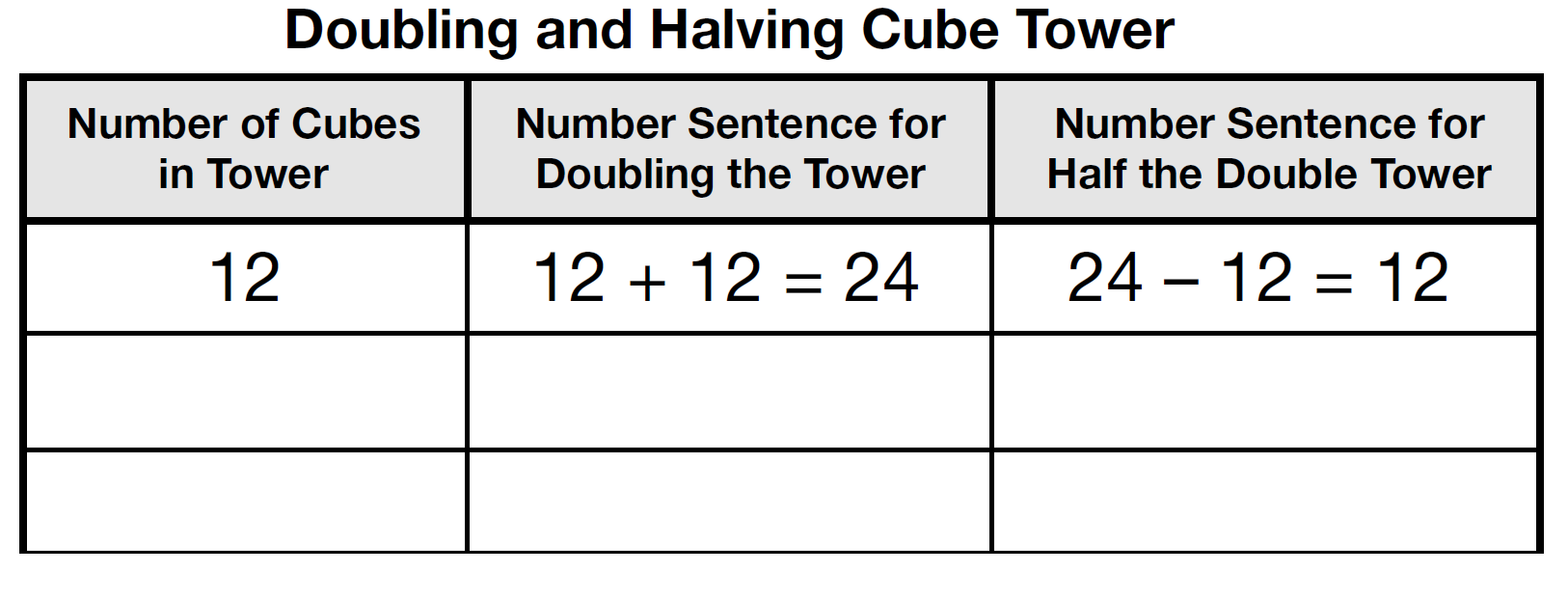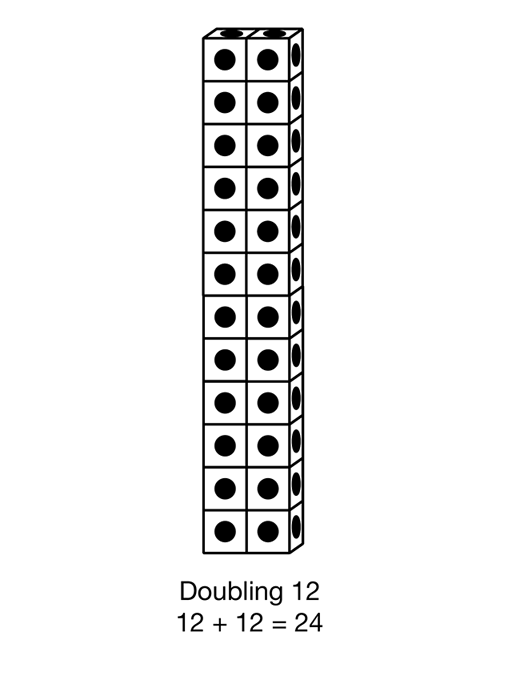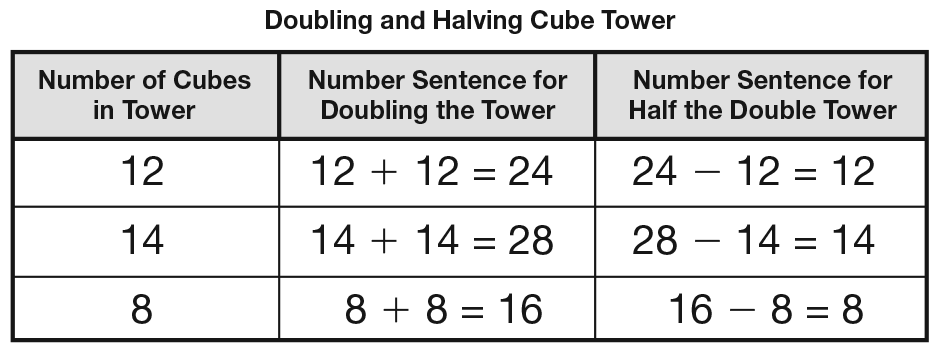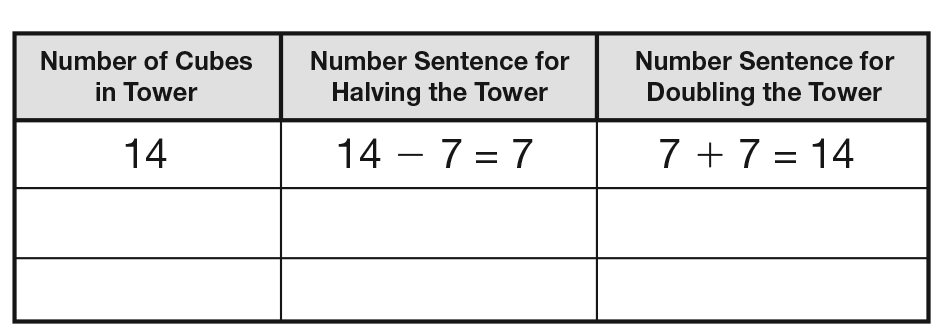Doubles and Halves
Est. Class Sessions: 2Developing the Lesson
Part 2: Using Connecting Cubes to Double and Halve
Doubling. Ask student pairs to build a single tower of 12 connecting cubes. Then ask students to build a two-column tower that has double the number of cubes in the first tower as shown in Figure 4.
Ask the following questions.
As students respond, write their responses in the Doubling and Halving Cube Towers data table you prepared. See Figures 2 and 5.
Continue to ask student pairs to make towers with different numbers of cubes. Numbers should be 15 or less.
Halving. Ask student pairs to build a tower of 14 connecting cubes. Ask students to change the tower so the new tower has half the number of cubes. Elicit suggestions on how you might do this. A student might respond that you will need to break the tower into two towers of the same height.
Ask:
Repeat the above procedure with other even numbers less than or equal to 30 as shown in Figure 6.
















